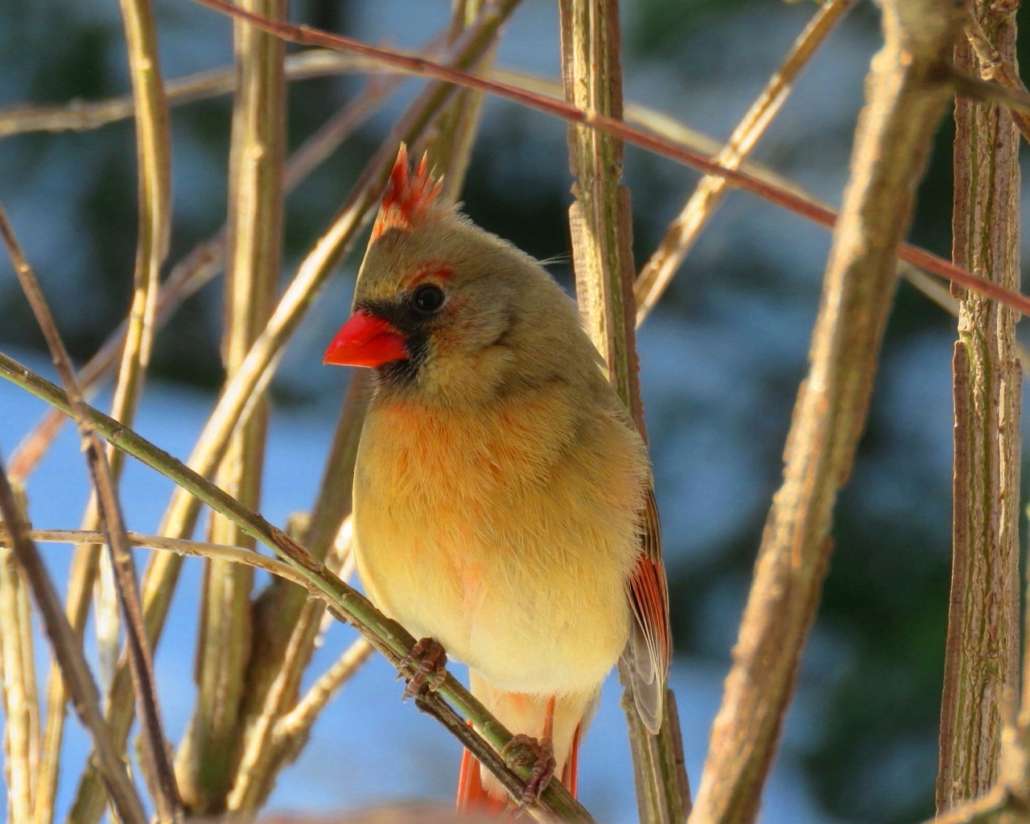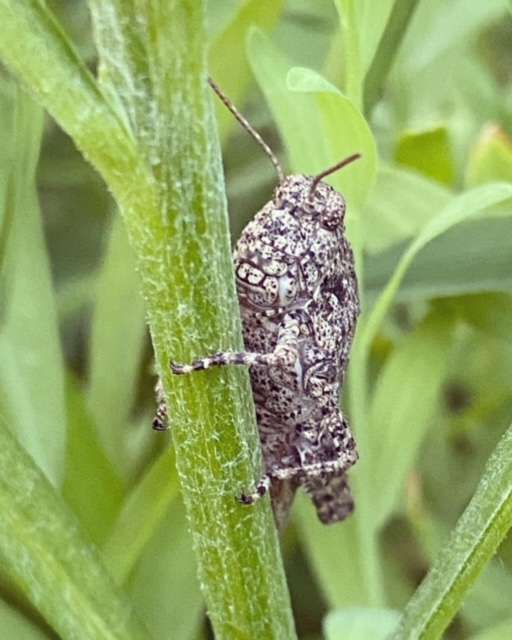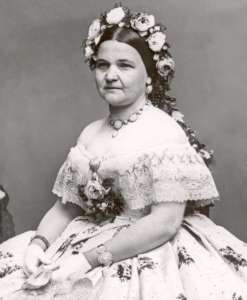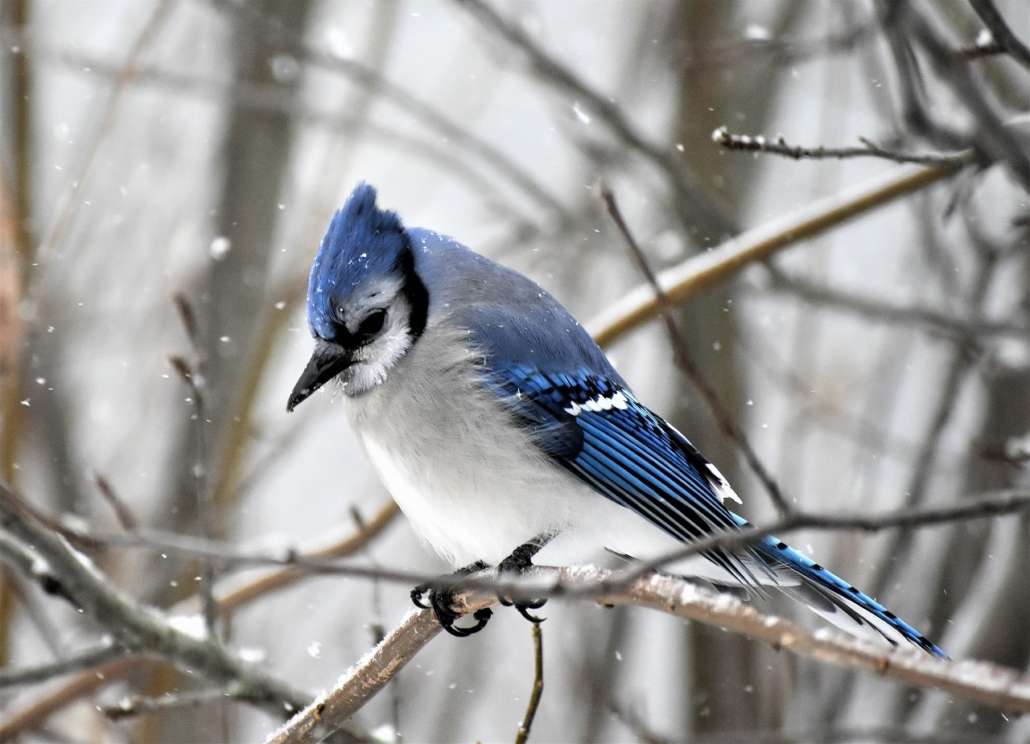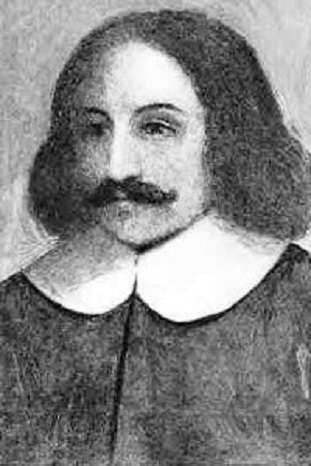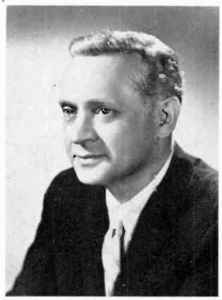FOR YOUR HEALTH: Tips for a Stress-Free Holiday Season
/0 Comments/in For Your Health/by Website Editor Following a few simple steps can make it easier for you to send out gifts this holiday season.
Following a few simple steps can make it easier for you to send out gifts this holiday season.
(NAPSI)—The holidays are right around the corner and sending your mail and packages with the U.S. Postal Service has never been easier or more reliable. With a little planning and the right tools, you can ensure that the perfect gift reaches everyone on your list.
Here are seven tips to make your holiday shipping stress-free:
1. Visit USPS online: Visit the USPS website at usps.com. You’ll have access to tools like ZIP Code lookup, Find Your Local Post Office, Hold Mail, Click-N-Ship, Schedule a Pickup, and more. It’s open 24 hours a day.
2. Check the USPS Holiday Newsroom…often: Have you ever wished there was one place where you could get all the information about holiday shipping? Wish no more. From deadlines to the latest news, the Holiday Newsroom at usps.com/holidaynews is your one-stop shop for all things holiday- and shipping-related.
3. Visit the Postal Store online: From stamps to supplies and even gift ideas, usps.com/store has everything to make holiday gift shipping—and shopping—easier than ever. Need free boxes? They’ve got those too. It also never closes.
4. Check the U.S. Postal Inspection Service website: At uspis.gov you’ll find tips to protect packages and prevent fraud, along with information on items that are prohibited or restricted.
5. Get Informed Delivery: When you sign up at informeddelivery.usps.com, not only can you get a preview of your daily mail and packages, you can also customize your delivery before your carrier arrives. Want to leave instructions to deliver your package to a specific location on your property? Now you can! You’ll even get notified the moment your package is delivered.
6. Visit USPS Operation Santa online: Get all the news and information you need at uspsoperationsanta.com. Find information on adopting a letter, getting your ID verified, shipping your gift and more. Letters to Santa will be posted beginning Nov. 28.
7. Join the conversation on social media: Stay “in the know” with the latest USPS news via Facebook, Twitter, Instagram, LinkedIn and YouTube. There’s also the official podcast of the United States Postal Service, “Mailin’ It,” taking you behind the scenes with USPS.
It pays to be prepared. With these tips from the Postal Service, you’ll be ready to make this year’s holiday season the best yet!
REVIEW POTPOURRI: Abraham Lincoln
/0 Comments/in Review Potpourri/by Peter Cates by Peter Cates
by Peter Cates
Abraham Lincoln
Abraham Lincoln (1809-1865) first met Mary Todd (1818-1882) at a formal dance in Springfield, Illinois, in late 1839 where he had been practicing law for two years, while she had just recently moved in with an older sister from their home state of Kentucky.
Despite their vast differences in background – she having grown up in wealth and he in poverty – they took an instant liking to each other and visited constantly; they shared mutual interests in literature, especially reciting and rereading Shakespeare tragedies, along with history, geography and politics and swapping anecdotes of their early years in Kentucky.
Both of them also had a keen sense of the absurd and shared much laughter as a result.
Within a year the two were engaged but then, due to an ongoing fear of marriage, he broke off the engagement. They went their separate ways for two very long years, however, not at all losing their affection for, and commitment to, each other. Mary, already knowing of Abe’s tendencies to melancholy, prayed for that glorious day when “Hamlet will be himself again,” as she confided to a close friend.
“That glorious day” finally arrived. The couple announced their intention at the very last minute and they were joined in marriage in her sister’s parlor.
Libraries of material abound on Lincoln’s rise as a politician in Congress, his horrifically challenging presidency during the Civil War and his assassination with its radical reconstruction aftermath.
His wife had her manic/depressive ups and downs but the couple loved each other up to that fateful night of April 14, at Ford’s Theater. Of their four sons, Edward died at 4 years old, in 1850, Willie at 12, in 1862, at the White House, and Tad at 18, in 1871. The oldest son Robert died at 84 in 1926.
Losing the youngest son is believed by many to have caused several breakdowns in her mental and physical health. Robert had his mother institutionalized for a few months in 1876 but her older sister eventually secured her release and freedom, after which Mary moved to France for four years.
By late 1880, due to a paralyzing fall from a chair while hanging a picture, she moved back to the states and moved in with her sister back in Springfield, Illinois, where she died in July 1882, from a stroke.
Mary Todd Lincoln was 63.
LIFE ON THE PLAINS: The legend of Ginjine Hill
/0 Comments/in Life on the Plains, Local History, Waterville/by Roland D. Hallee by Roland D. Hallee
by Roland D. Hallee
This week we’re going to continue with our look at Life on the Plains during the winter, that we first took a look at two weeks ago.
Besides the hard work of shoveling the driveway following every snowstorm – lots of nor’easters – we had a good time playing in the white stuff. Two weeks ago we talked about the massive snow banks created from moving all that snow, and how we fashioned tunnels through them, usually culminating with a “snow” fort on the end, facing the street. From there we would spend much time making snowballs – conditions permitting – and creating a cache. When the time was right, and unsuspecting kids walking by, we would send a barrage of snowballs their way. Sometimes they couldn’t figure out from where they came. Many laughs, and many snowball fights ensued.
To fortify our fortress, we would take a shoebox, pack it with snow, creating a “brick” and mounted them on top of the snow mound for added protection. Our fort was the “cat’s meow”. On especially cold days, we would squirt some water in the shoebox to freeze the snow, and make a hard brick that would better withstand an onslaught from the other side. Our mother was never impressed when we came home with our mittens soaking wet.
And then there was the sledding. At the end of one of the streets in the neighborhood – Lockwood Alley – was a steep hill that connected with Silver Street, just about across the street from the location of the old Morning Sentinel building. The city would blockade the hill during the winter for the neighborhood kids to sled without the danger of oncoming traffic. The elevation was called the “Ginjine Hill” (pronounced Jin-Jine). I’m only guessing here because no one really knew how to spell the word, nor do we, still to this day, know from where the name came. The hill is no longer there, dismantled during the downtown urban renewal project in the 1960s that produced the Concourse.
There were many adventures there. We would all show up with our Radio Flyers, a sleek sled made of wood, with steel runners. Believe it or not, I still have mine. Before the initial run, we would wax up the runners to make the sleds super fast. We would line up three – sometimes four – wide to see who had the fastest sled. However, there was a hazard at the bottom of the hill where it flattened out. It was a low spot in the road that could launch a sled airborne, along with its rider. We all knew it was there.
Not only did we want to see who had the fastest sled, along with who could glide the farthest, you also had to maintain control of the sled. Many a contestant would go flying off the vehicle when it would encounter that dip in the road, sending the occupant one way, and the sled the other. There were also times when the ejected rider would collide with a steel fence that surrounded the first house at the bottom. Many times we would walk away unscathed, but on a few occasions, the operator had to go home for “repairs,” and not to the sled.
Of course, being 10-12 years old, we had no fear, which didn’t always bode well. Many a crash would bring out roaring laughter from the others, until we discovered some injuries. Of course, the older boys would always look out for the younger.
The Ginjine Hill was at the northern end of The Plains, but many kids knew the legend.
VETERANS CORNER: It’s time everyone had a time out
/0 Comments/in Veteran's Corner/by Gary KennedyThe views of the author of this column are not necessarily those of The Town Line newspaper, its staff and board of directors.
 by Gary Kennedy
by Gary Kennedy
Most of us are taking a sigh of relief; the mid-term election, with all its turmoil and anxiety, has come to an end or has it? There have been gains and losses for all parties. There are those that will talk about the result for a few weeks, then plans will be made for the next political battle. In a sense, it is a lot like military applications with strategy being the precursor to surgical strikes in hopes to change the nature of things.
In a democracy we always seek perfection which seems to be a matter of opinion; the Democrats want this and the Republicans want that. Some opinions make us strong while others make us weak. It seems to me the safety and overall well-being of our country should be our first concern. We all know right from wrong, and good from bad. Some use God to define that and some just use democracy as an excuse/crutch to take them through the argument. This usually ends up in some sort of conflict ending in violence. It’s time everyone had a time out and take a good look at what is happening to our country. What do you think would happen if we had a serious confrontation on our soil? I think we would all come together in a humble way and plan a unified way to save what we have or what was left.
However, at this time in our conceit and arrogance we can’t imagine our not being superior to the rest of the world. We fantasize magical earth shattering weapons that others don’t know about. With the openness of our country that is but a dream left up to the “fantastic four”. If we won a conflict of this nature the end result would affect each and every one of us. We would no longer have Veterans Day or be thanking veterans as we would all be veterans; Ukraine a good example; all people fight in all places.
Perhaps someone will read these thoughts and have a change of heart/mind. We know what is right or wrong, we know what is good or bad. We can see the disasters in the world on any news channel. So how do you think our veterans see all this? I can assure you veterans see this entirely different than non veterans. After serving our country and seeing death and destruction they become the greatest examples and, in many cases, the greatest leaders available because they have seen and felt both sides of freedom.
A veteran isn’t the same person after earning the name veteran. Some return damaged, used beyond normal possibilities, some of the others become tomorrow’s leaders with great credentials. My greatest concern is how veterans are affected by the negativity in politics. Many veterans become extremely angry to the point of volatility. Other veterans tend to go into hiding; for this group the political theatre is a very painful event. Those of us who work with veterans try to soothe but often times fall short of success. I have no solution other than trying to keep them occupied and away from T.V.
Many of us pray for better times. It wasn’t always this bad. I have had many issues come up lately but I wanted to get this out of the way. These are my feelings as a 100 percent disabled American Veteran.
I want my children and grandchildren to grow in a healthy atmosphere. They are the leaders of tomorrow and the influence of these times will live with them. Some will turn these negatives to good; others will carry anger in their development. All will be reflected in their application of leadership going forward. All this being said and evaluated I feel we should work to eliminate the word veteran from its military connotation. Of course this would have to be done on a worldwide basis. There is no easy chore ahead of us. However, with family and God by our side and the will to see it through, “thy will be done”. God bless and have a happy and safe holiday season.
Give Us Your Best Shot! for Thursday, December 1, 2022
/0 Comments/in Give Us Your Best Shot!/by Website EditorTo submit a photo for this section, please visit our contact page or email us at townline@townline.org!

PALERMO SUNRISE: Ashley Wills, of Palermo, photographed this sunrise over Sheepscot Lake, in Palermo.

NO COMPLAINING, PLEASE: Emily Poulin, of South China, caught this gold finch as he seems to be complaining about the weather.
FOR YOUR HEALTH: What You Need To Know About Skin Cancer
/0 Comments/in For Your Health/by Website EditorDr. Shen has come up with a non-invasive, inexpensive treatment for certain skin cancers.
(NAPSI)—If you or someone you care for is ever among the 5 million people diagnosed with basal cell or squamous cell carcinoma every year in the U.S., here are a few facts it would be healthy for you to know.
Skin Cancer Stats
1.Skin cancer is the most common type of cancer in the U.S.
2.Basal cell and squamous cell carcinoma account for 95% of all skin cancers.
3.Your risk increases with age.
Skin Cancer Signs
A change in your skin is the most common sign of skin cancer, advises the Centers for Disease Control and Prevention (CDC). This could be a new growth, a sore that doesn’t heal, or a change in a mole. If you notice any of these, see your dermatologist. Nearly all skin cancers can be treated effectively if they are found early.
Most skin cancers are caused by too much exposure to ultraviolet (UV) rays. UV rays come from the sun, tanning beds, and sunlamps. UV rays can damage skin cells.
Reduce Your Risk
It’s a good idea to protect your skin from UV rays from the sun, and from tanning beds and sunlamps advises the CDC. Here’s how:
• Stay in the shade when you go out all year round and regardless of the weather.
• Wear clothing that covers your arms and legs.
• Wear a hat with a wide brim to shade your face, head, ears, and neck.
• Wear sunglasses that wrap around and block both UVA and UVB rays.
• Use a broad spectrum sunscreen with a sun protection factor (SPF) of 15 or higher.
• Avoid Indoor Tanning. A tan does not indicate good health.
Types of Treatments
If, despite such precautions, you still develop skin cancer, there are several kinds of treatments that can remove or destroy basal cell skin cancers explains the CDC. These cancers very rarely spread to other parts of the body, although they can grow into nearby tissues if not treated. One of the most common is surgery. That, however, can leave scars and have other serious side effects.
In addition, radiation therapy, chemotherapy, photodynamic therapy, immunotherapy, and other drug therapy may be tried. Each has its benefits and drawbacks.
Special Treatment
Fortunately for many people, dermatologist Dr. John Shen has developed a non-surgical treatment for certain kinds of basal cell and squamous cell carcinoma of the skin. This non-invasive treatment is a combination topical therapy called “The Shen Cocktail,” applied to the cancerous area and closely monitored for six-weeks.
According to Dr. Shen, dermatologists in Australia, Europe, and the UK were using Imiquimod 5% Cream, sometimes with 5-Fluorouracil, to treat basal cell and squamous cell carcinoma.
He was inspired to add Tretinoin 0.1% Cream to the combination to peel off the top layer of skin so the other ingredients could signal the body’s immune response to attack the cancerous and precancerous skin cells.
Researchers have found “The Shen Cocktail” to have a 99% cure rate in people with basal and squamous cell carcinoma of the skin less than 2cm in width, another reason it’s important to get the disease dealt with as soon as possible.
Learn More
To treat as many people as possible and keep costs of treatment low, The Shen Cocktail is not trademarked or patented. To learn further facts, see videos or read academic papers about the treatment and to find out whether you may be eligible for the Shen Cocktail, go to www.shendermatology.com or call Shen Dermatology at (951) 526-2044.
Hack Friday: millions fall victim to scams
/0 Comments/in AARP Scam Alert/by Website Editor Nearly 100 million Americans have fallen victim to online shopping scams, it was revealed today, as 112 million US shoppers prepare to embark on the biggest bargain hunts of the year.
Nearly 100 million Americans have fallen victim to online shopping scams, it was revealed today, as 112 million US shoppers prepare to embark on the biggest bargain hunts of the year.
Research from cybersecurity company NordVPN can reveal that 37 percent of Americans have been scammed while shopping online — equivalent to 95.6 million people.
With Black Friday less than a week away, cyber scammers have their sights on the four in five Americans who might take part in the event — 43.2 percent of US shoppers say they’ll head online for Cyber Monday, Black Friday or the Christmas sales, with a further 37.7 percent still to decide.
The task of online criminals is being made easier by the millions of US consumers prepared to offer up a treasure trove of personal information in exchange for an extra markdown or freebie — and those who have already been scammed are at the front of the queue.
Of those people who have previously experienced a scam, many admit they’d still be prepared to hand over a bunch of bizarrely irrelevant information to get a big discount or freebie.
One in ten (10.5 percent) would hand over their credit card details, 7.6 percent would give their social security number and one in eight (12.2 percent) would reveal where they worked. A further 7 percent would even reveal their children’s names for the chance to bag an extra bargain. Those people who were willing to disclose their social security number were nearly TWICE as likely to have been scammed.
All told, 88.6 percent of scam victims are still willing to hand over at least some personal data to land a bonus gift, discount or free service.
The study also revealed that 18.8 percent of Americans consider the security of websites their lowest priority when shopping online. By comparison, price was the biggest driver, with 30.1 percent of people choosing it as their chief concern.
Marijus Briedis, Chief Technology Officer at NordVPN, said:
“Black Friday is a honeypot for scammers so the 112 million Americans preparing to attack the biggest bargain hunts of the year had better be on their guard.
“It’s vital to pay attention to the security certificates on websites and be wary of any site asking for details that they just don’t need. If an offer looks too good to be true, it probably is.”
REVIEW POTPOURRI: William Bradford
/0 Comments/in Review Potpourri/by Peter Cates by Peter Cates
by Peter Cates
William Bradford
Elected 30 times as Governor of the Plymouth Massachusetts Bay Colony from 1621 to 1656, William Bradford (1590-1657) began his massive history Of Plymouth Plantation in 1630 and abandoned further work by 1647.
He wrote the following entry on the first Thanksgiving in 1621, one year after the Pilgrims arrived on the Mayflower barely alive after the hellish two month voyage from England:
“They began now to gather in the small harvest they had, and to fit up their houses and dwellings against winter, being all well recovered in health and strength and had all things in good plenty. For as some were thus employed in affairs abroad, others were exercised in fishing, about cod and bass and other fish, of which they took good store, of which every family had their portion. All the summer there was no want; and now began to come in store of fowl, as winter approached, of which this place did abound when they came first (but afterward decreased by degrees). And besides waterfowl there was great store of wild turkeys, of which they took many, besides venison, etc. Besides they had about a peck a meal a week to a person, or now since harvest, Indian corn to that proportion. Which made many afterwards write so largely of their plenty here to their friends in England, which were not feigned but true reports…”
Bradford’s book is well worth dipping into just for its account of the ruthless Cape Cod landscape and its rocky soil and how the original settlers carved out a living that first year.
A very happy Thanksgiving!
Dick Van Dyke
The October 15, 1974, episode of Columbo has Dick Van Dyke, still living at 96, guest starring as a Pulitzer Prize winning photographer who murders his wife and arranges it to look like a kidnapping that went wrong. I may be in a minority but I have always found his acting and comedic talents a bit overrated, whether it was his 1960s Dick Van Dyke Show with Mary Tyler Moore, Carl Reiner, etc., or Diagnosis Murder.
As the killer, Van Dyke is so wooden in his performance that he was easily upstaged by all the other cast members. I would particularly like to single out the gifted character actress Antoinette Bower in her 15 minutes as the wife who is lured by her husband to a secluded ranch house, tied up and murdered. She gave just the right snarky edge to her role.
Another actress, Joyce Van Patten, provided much endearing comic relief as a nun running a soup kitchen who tries to replace Columbo’s favorite old raincoat with a barely used one from the kitchen closet.
Enoch Light
A 1959 el cheapo ten-inch 78 on the Prom record label features very good renditions of two hit songs from the 1950s – Wheel of Fortune and Silver and Gold. Enoch Light conducted with vocals provided by his stable of artists who were obscure then and, as far as anyone knows, have remained obscure. Prices per disc were between a quarter and 30 cents.
Prom and several other record labels that sold in dime stores were owned by the Kasen Brothers who were based in Newark, New Jersey, and who jointly owned the Synthetic Plastics Company.
MY POINT OF VIEW: Be thankful for what you have in this tough year
/0 Comments/in My Point of View/by Gary Kennedy
 by Gary Kennedy
by Gary Kennedy
Thanksgiving is supposed to be a cheery time of year. We get time off from work and time is allowed to join with family and friends to give thanks for all we have received this year. All this is great in theory but what if your year has been a difficult one? I think many of us can say that 2022 has been a very hard and difficult year. Sometimes it is difficult to separate the positives from negatives. However, the test of character allows us to stop and look at all that is and to separate the positives from negatives. When this is done one will discover that there is much to be thankful for.
When all is said and done we must turn to the supreme architect and let Him know that we understand his plan and thank Him for having one. This is the plan that gives you and I a place in the greater glory in the gift he has waiting for the loyal among us. Realizing that the grave is not the end of things is such a wonderful gift.
Our world lately seems to be crumbling apart and this has weighed heavily on us. Some have let this consume them and give into the darkness. This is because they are weak in spirit and have lost sight of the gift of everlasting life. If you have family or friends that are harboring these negative feelings it’s your duty to step in and lend a hand. You both will feel so much better for it. Acts of love and kindness do not go unnoticed.
The traditional Thanksgiving with Pilgrims and Indians, is pretty much how we perceive Thanksgiving. We also know that the repast is turkey with stuffing and vegetables with mince meat pie for desert. It is a given, without knowing the who, what or why of it. I grew up in farming and logging community. I know that mince meat pie is made from the neck of venison but most people today don’t know that. Many hunters will throw the very tasty neck meat away because it is difficult to harvest. Many of the old secrets are lost in time.
It was George Washington, father of our country, and a Master Mason who set the 26th of November 1789 aside as Thanksgiving, but not to give praise for our bounty but to give thanks for the adaptation of U.S. Constitution. He also enjoined people to unite in a most humbly offering of our prayers and supplications asking God to pardon our transgressions. Thanksgiving didn’t become a permanent official U.S. holiday until President Franklin Delano Roosevelt became president in 1939. Both presidents were Master Masons. Since the beginning of the U.S.A. we have had 14 Master Masons as presidents. It seems fitting as Masonry is the oldest fraternity known. There you have it; you just learned one of the secrets of the Masonic order.
So Thursday, November 24, we will all be enjoying family and friends and great food and drink. Remember what it is all about and enjoy this great day with those you care about but be ever mindful of the millions that won’t have what you are about to enjoy. Pray for the less fortunate and share where and whatever you can. Give a special thanks to the veteran who has allowed this all to be possible and always remember those who gave the supreme sacrifice. Have a great Thanksgiving Day and God be with you all.
Interesting links
Here are some interesting links for you! Enjoy your stay :)Site Map
- Issue for April 3, 2025
- Issue for March 27, 2025
- Issue for March 20, 2025
- Issue for March 13, 2025
- Issue for March 6, 2025
- Issue for February 27, 2025
- Issue for February 20, 2025
- Issue for February 13, 2025
- Issue for February 6, 2025
- Issue for January 30, 2025
- Issue for January 23, 2025
- Issue for January 16, 2025
- Issue for January 9, 2025
- Issue for January 2, 2025
- Issue for December 19, 2024
- Issue for December 12, 2024
- Issue for December 5, 2024
- Issue for November 28, 2024
- Issue for November 21, 2024
- Issue for November 14, 2024
- Issue for November 7, 2024
- Issue for October 31, 2024
- Issue for October 24, 2024
- Issue for October 17, 2024
- Issue for October 10, 2024
- Issue for October 3, 2024
- Sections
- Our Town’s Services
- Classifieds
- About Us
- Original Columnists
- Community Commentary
- The Best View
- Eric’s Tech Talk
- The Frugal Mainer
- Garden Works
- Give Us Your Best Shot!
- Growing Your Business
- INside the OUTside
- I’m Just Curious
- Maine Memories
- Mary Grow’s community reporting
- Messing About in the Maine Woods
- The Money Minute
- Pages in Time
- Review Potpourri
- Scores & Outdoors
- Small Space Gardening
- Student Writers’ Program
- Solon & Beyond
- Tim’s Tunes
- Veterans Corner
- Donate


